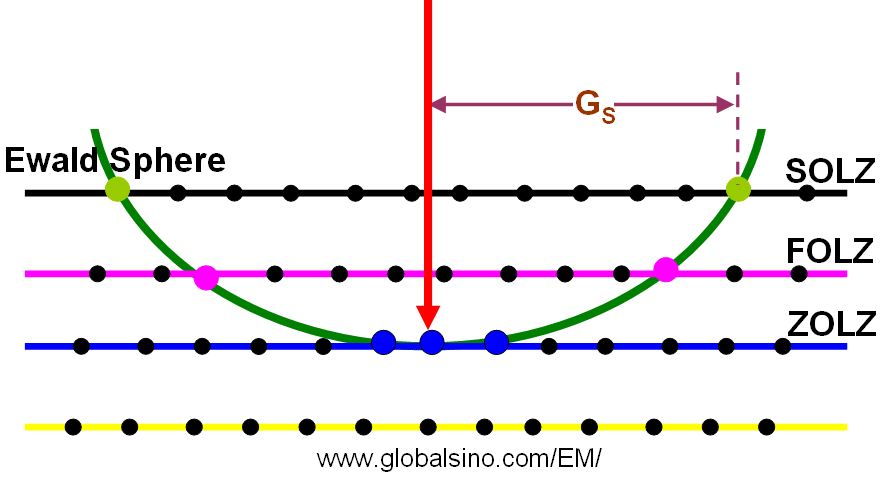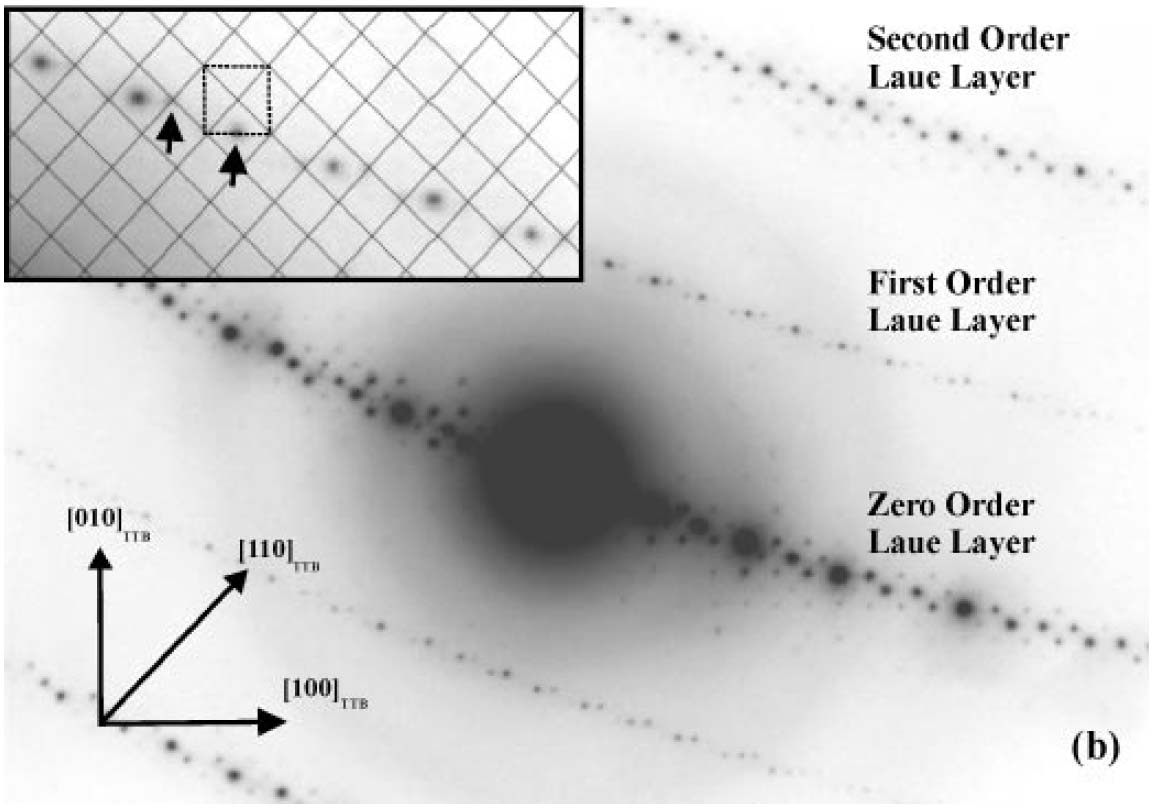=================================================================================
ZOLZ (zero-order Laue zone) can be described by the equation given by
hu + kv + lw = 0 --------------------------------- [3903]
[uvw] -- The direction of the incident electron beam.
hkl -- The coordinates of an allowed reflection in the Nth order Laue zone.
Figure 3903a shows ZOLZ, FOLZ (first order Laue zones) and SOLZ (second order Laue zones).

Figure 3903a. Schematic of ZOLZ, FOLZ, and SOLZ.
At higher angles the Laue condition is no longer satisfied so that the ZOLZ intensity decreases to zero. However, when the Ewald sphere intercepts the HOLZ planes of reciprocal lattice this diffraction intensity returns. On the other hand, the symmetry of the diffraction pattern from the ZOLZ is normally repeated in the HOLZ patterns.
The analysis of Laue zones can provide detailed information regarding the samples. For instance, √2-TTB phase of PbxNb1.17W1.0O5.93+x (x > 0.15) in Figure 3903b presented asymmetric electron diffraction patterns and exhibited systematically weak odd-order (First order here) Laue layers lying half-way between the positions of the strong even-order (zero and second order here) layers. The even-order layers correspond to the basic 3.8 Å cTTB (c axis of TTB structure) repeat. Analyses of multiple samples indicate that these weak odd-order reflections were present in the same positions as the maxima in the even layers and at the midpoint of each edge of the basic TTB square.

Figure 3903b. Asymmetric diffraction pattern of the √2-TTB phase of PbxNb1.17W1.0O5.93+x (x > 0.15). The inset enlargement of the first-order Laue layer shows that the black mesh defines the √2-TTB reciprocal lattice periodicity [2], and the dashed square illustrates the position of the basic TTB cell repeat with respect to the √2-TTB cell.
Adapted from [1]
With CBED technique, the ZOLZ patterns is normally recorded using a medium camera length and present the Gjønnes-Moodie (G-M) lines from which additional translation symmetry elements such as screw axes and glide planes can be extracted [3].
The Precession electron diffraction (PED) patterns not only display more diffraction spots in the ZOLZ than SAED ( selected-area electron diffraction) and NBED (nanobeam electron diffraction) but also show some diffraction spots in the high-order Laue zones (HOLZ) which normally do not show in SAED and NBED patterns. PED also can show more diffraction spots than the conventional diffraction techniques.
[1] Sarah K. Haydon and David A. Jefferson, Quaternary Lead-Niobium-Tungsten Oxides Based on the Tetragonal Tungsten Bronze Structure, Journal of Solid State Chemistry 161, 135 - 151 (2001).
[2] S. K. Haydon, Ph.D. Thesis, University of Cambridge, 2000.
[3] J. Gjønne, A.F. Moodie, Acta Cryst. 19 (1965) 65.
|

